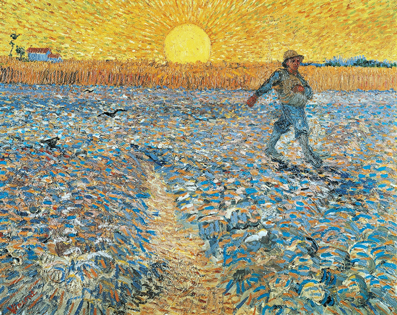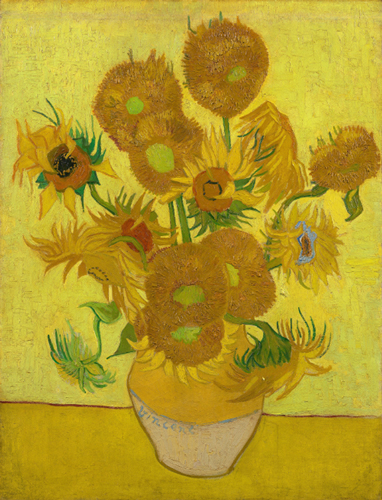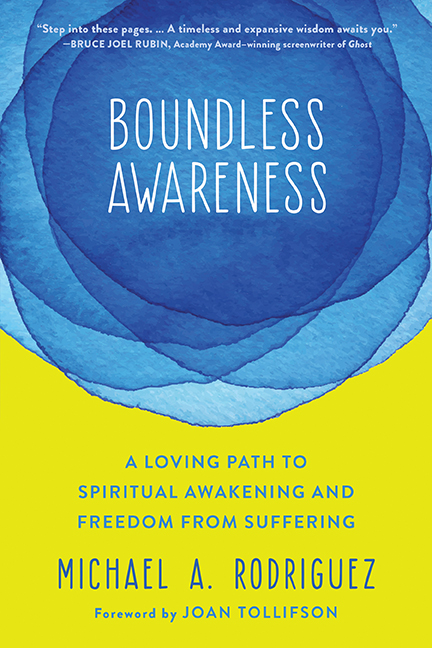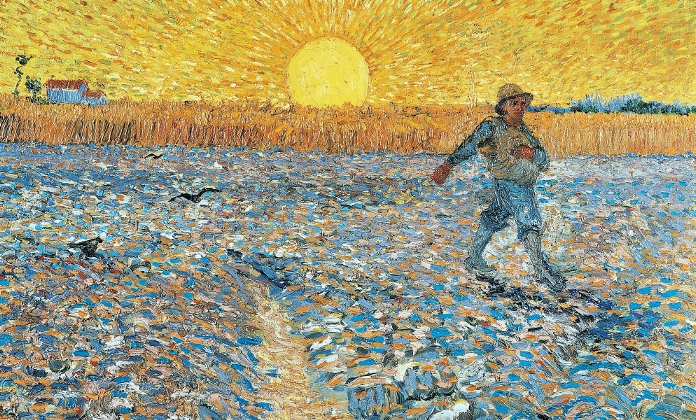By Michael A. Rodriguez, author of Boundless Awareness
Take a moment to think back to when you were a young child. Remember how everything was open, interesting, mysterious, vibrant, new, and fresh? Remember how curious and joyful you felt? Remember how the world was full of endless possibility? In short, remember your innocence?
Eventually, we all forget this wide-eyed perspective and begin to live within the narrow limits of the known. That’s what happens when we grow up. Our innocent beginner’s mind gets covered up with all our learning, and we start to feel increasingly lifeless, numb, callused, and jaded by the weight of our accumulated knowledge and limiting beliefs. There’s a great saying by the Zen master Shunryu Suzuki: “In the beginner’s mind there are many possibilities, in the expert’s mind there are few.” When we are cluttered with relative knowledge, we are closed to the open-ended mystery of life. In this state, we essentially sleep walk through our days. The world seems familiar and repetitive, making us wonder in our quieter and more honest moments of self-reflection what it’s all about.
However, the truly good news is that we never actually lose our innocence. It is still alive in all of us and, if you are interested, can be rediscovered through a journey that we could call “spiritual awakening.”
When we look closely at experience, we realize that it is not the world that becomes tarnished, closed, or deadened. The world is always radiant and alive and altogether miraculous. It is, in fact, a joyful expression of conscious spirit. Rather, it is our perception of the world that becomes muted. When we perceive the world as dull and meaningless, we are “asleep” to the actual vibrancy, wonder, and spiritual radiance of life.
I am reminded of that famous quotation from William Blake’s The Marriage of Heaven and Hell that served as the inspiration for Aldous Huxley’s book published in 1954 called The Doors of Perception as well as for the name of Jim Morrison’s band: “If the doors of perception were cleansed every thing would appear to man as it is, Infinite. For man has closed himself up, till he sees all things thro’ narrow chinks of his cavern.” How, then, are we to awaken from our spiritual slumber? How are we to cleanse the doors of perception? I’d like to suggest that the experience of beauty, particularly of art, offers such an opportunity.
How many times have you looked at the sun or a sunflower? Many times, no doubt. And how many times have you really seen it? Very few, no doubt. I’m making an important distinction here between “looking” and “seeing.” “Looking” is like a blank stare that takes things for granted. It is repetitive because it is based on memory that has calcified into cognitive structures of experience. When you merely look at something, you experience what you expect to experience, what you have already experienced before in the past. You experience through a hazy filter of mental labels.
“Seeing,” on the other hand, is a clear vision of things as they are: radiant and alive with the animating power of conscious spirit. There’s a marvelous quotation by the French novelist Marcel Proust: “My destination is no longer a place, but a new way of seeing.” This “new way of seeing” is deeply transformative. It takes you out of the horizontal plane of time and opens up the vertical plane of timeless beauty and perfection.
Because our encounters with art transform the habitual routine of looking into the sacred act of seeing, it offers a “mini-enlightenment” experience. Like the experience of true love, the experience of art melts the egoic or separate sense of self, awakening us to our essential oneness with the mystery of life. We come away from the experience feeling deeply enriched and fundamentally changed somehow, as we retain a cell memory of the sacred encounter that shifted us from one register of experience to another. We forget ourselves and our troubles for a few blissful moments as we stand in awe, transfixed by the beauty in which we participate as conscious beings. We’re transported from the realm of the walking dead to the realm of the gods.
Take, for example, two paintings by Vincent van Gogh. In the first painting, The Sower, van Gogh captures the stunning brilliance of the sun, which is really the focal point of the painting. The sun spits out its luminous rays over the wheat field in an overwhelmingly generous, altogether joyful burst of life-giving energy. Meanwhile, the sower is in the process of scattering his seeds in the lush, fertile field.

With his vibrant vision, van Gogh compels you to feel the nourishment and abundance of nature. It’s a visceral, somatic experience rather than a mental one. After seeing this painting, it is impossible to look at the actual sun in the same way again. The next time you glance at it directly or peripherally, you will notice it, which is another way of saying that you will truly see its magnificent radiance and appreciate the vital role it plays in sustaining all life, including yours.
For the second example, I chose van Gogh’s repetition of the fourth version of his famous Sunflowers. All the paintings in his Sunflowers series are wonderful (as in “full of wonder”), but I chose this particular one because of its bright yellow-gold palette. In this painting, it is not just the flowers that are luminous; the table, vase, and background are equally shining with spiritual radiance. By extension, the whole world is elevated into, or revealed to be in, a light-filled state of grandeur. Also, the sunflowers are withering, suggesting the beauty of death and its creative interdependence with life.

It is hard to imagine someone not feeling the vibrancy of these colors. Like the sun and its rays in the previous painting, these flowers, along with the entire context, spontaneously evoke a response at a gut level. You feel what you see. After encountering this painting, you will most likely never look at sunflowers the same way again. You will see them. Sunflowers are a glorious work of art both in this painting and in life.
As these paintings by van Gogh exemplify, art jolts us out of a fuzzy haze back into a crisp, clear, alert wakefulness. It cuts through boredom and makes life rich and interesting again. It makes us pay attention rather than being distracted, checked out, going through the motions. It transmutes the familiar into the mysterious. It reveals the world to be a multi-dimensional technicolor experience— “a paradise of forms and colors,” to use Thich Nhat Hanh’s words—rather than one-dimensional and monochromatic. When you wake up and actually see the world instead of just looking at it with the blindness of inattention, colors are brighter, lines are sharper, images are clearer. Art makes us see nature with new and innocent eyes again.
I invite you not only to take in some great art, but also to take a walk in nature. Notice how things are perpetually calling for your attention, beckoning you to notice the mystery that shines before you. Notice, for example, when the sun’s rays light up a tree, or a leaf, or a flower, or a patch of grass. Notice how bright it is not just with physical light but with the light of awareness. With enough noticing, perhaps you will awaken to a new perception of life in which you see everything illuminated by the mysterious light of conscious spirit that is at the heart of all experience.
 Michael A. Rodriguez is a spiritual teacher who works with people in meetings, retreats, and private sessions on a full-time basis in the United States and abroad. He holds four academic degrees, including a master’s degree in comparative religion from Harvard and a PhD in English literature from Florida State University; taught at the university level for well over a decade; and has lived long-term in two monasteries. Drawing always from his direct experience, Michael illuminates the undivided nature of Life or Consciousness with great clarity and compassion, pointing to reality in a way that is free from dogma, ritual, or adherence to any particular tradition. He draws skillfully from the world’s wisdom traditions and also integrates Jungian psychology, literature, music, and art into his work to address the full range of human potential. All his work, including his interviews, can be accessed via his website at www.boundlessawareness.org.
Michael A. Rodriguez is a spiritual teacher who works with people in meetings, retreats, and private sessions on a full-time basis in the United States and abroad. He holds four academic degrees, including a master’s degree in comparative religion from Harvard and a PhD in English literature from Florida State University; taught at the university level for well over a decade; and has lived long-term in two monasteries. Drawing always from his direct experience, Michael illuminates the undivided nature of Life or Consciousness with great clarity and compassion, pointing to reality in a way that is free from dogma, ritual, or adherence to any particular tradition. He draws skillfully from the world’s wisdom traditions and also integrates Jungian psychology, literature, music, and art into his work to address the full range of human potential. All his work, including his interviews, can be accessed via his website at www.boundlessawareness.org.


 2024 Peace Playbook: 3 Tactics to Avoid Clashes with Your Partner
2024 Peace Playbook: 3 Tactics to Avoid Clashes with Your Partner